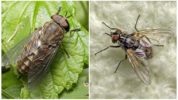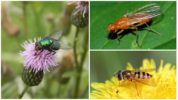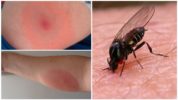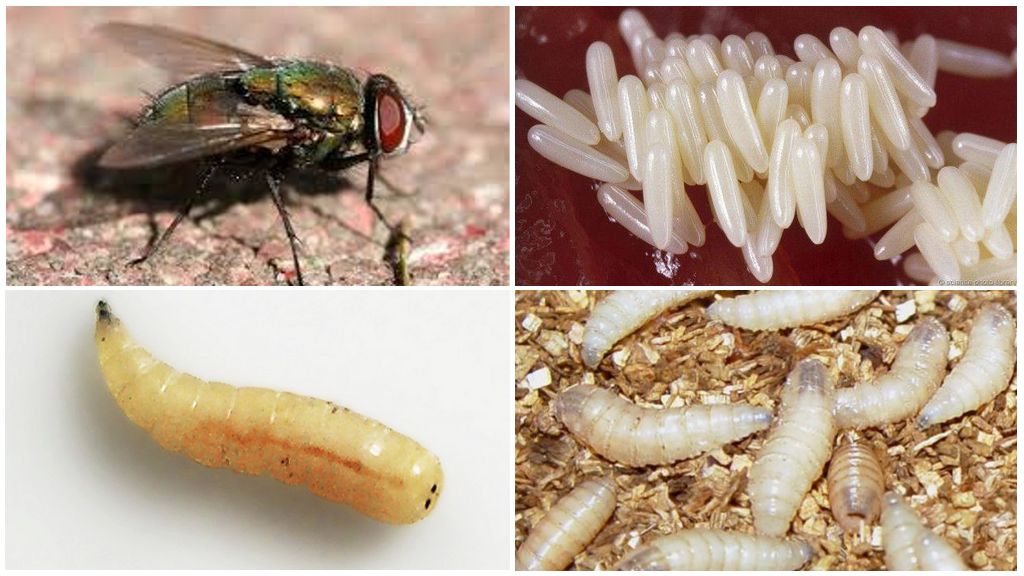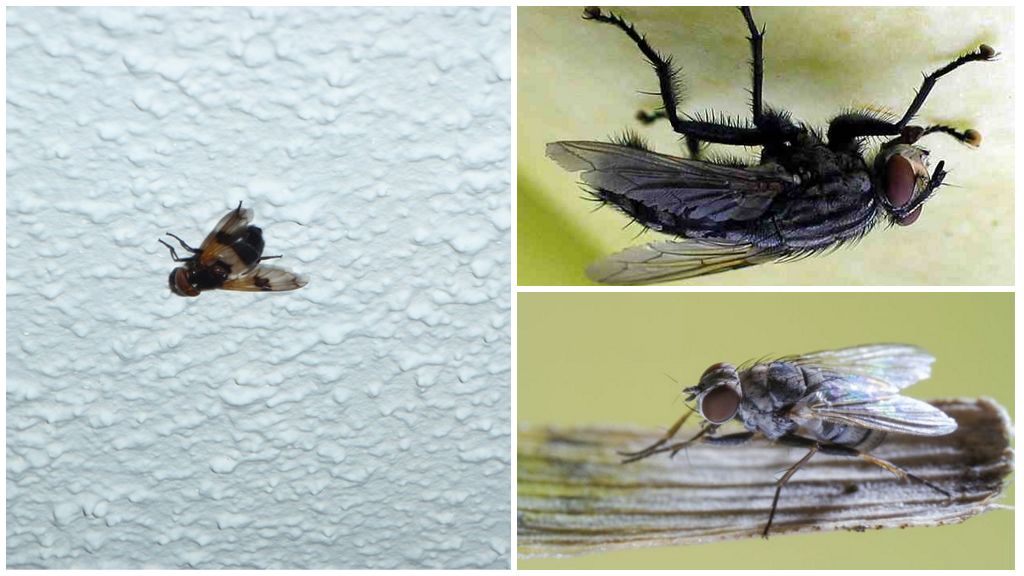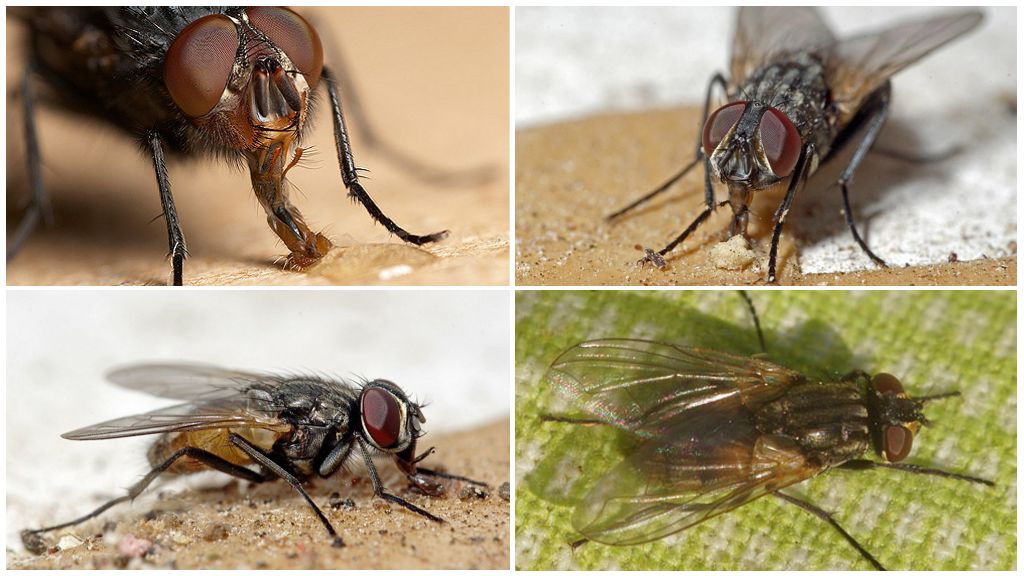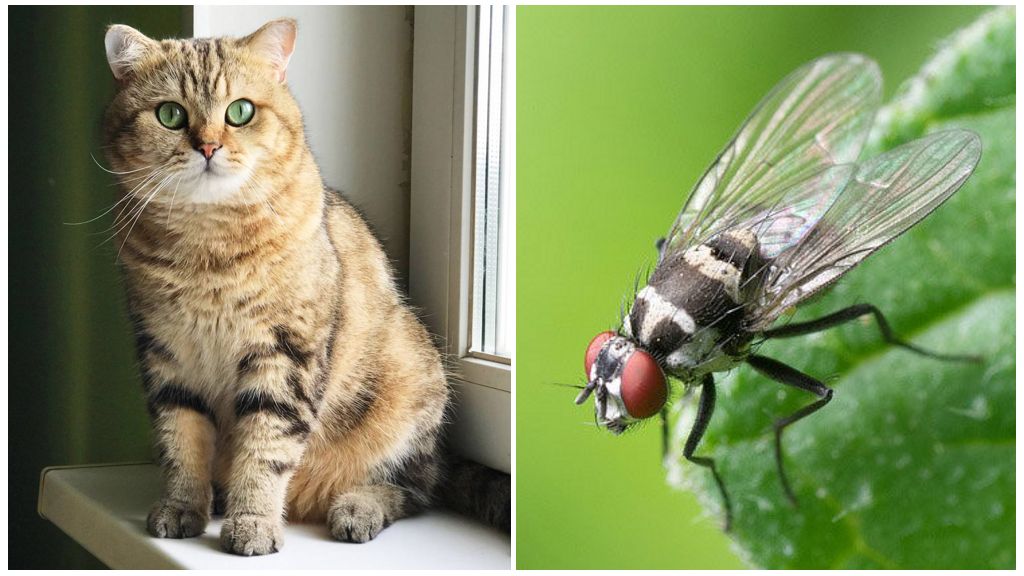- Horsefly (left) and lighter (right)
- Safe flies for humans
- Fly bite
Whether flies bite - most people will answer in the affirmative. But not everyone suspects that they are doing only certain species. Insects are especially active in late summer and autumn. People explain this phenomenon by the rapid death of insects. Such a statement is incorrect, the reason is completely different.
Biting flies
About 5 thousand are read in the world. species of flies. They differ in color, size, and feature of life. Most of them feed on the juices of plants, decaying fruits, corpses, manure, feces. Their oral apparatus is equipped with a special proboscis for the absorption of food, but it is so soft that it is not able to pierce the skin of a person or animal. Such insects do not bite people, do not attack pets, wild animals.
A biting fly is a lighter. Distributed everywhere. Differs from the usual housefly the location of the wings, which are directed to the side, not along the body. As well as the oral apparatus. At the end of the proboscis there are special bristles that are able to bite through the epidermis. Why do flies bite - to replenish vital energy reserves, to be able to lay eggs.
Interesting!
Biting or not flies, you can argue endlessly. And all because a person does not see the difference between an ordinary annoying insect and a lighter, which are active in late summer. They spend most of their lives in the wild, attacking animals, but with the onset of cold weather they seek favorable places. People enter the house through open windows, doors, cracks, bite in August, autumn, before persistent cold weather sets in.
Varieties of Biting Flies
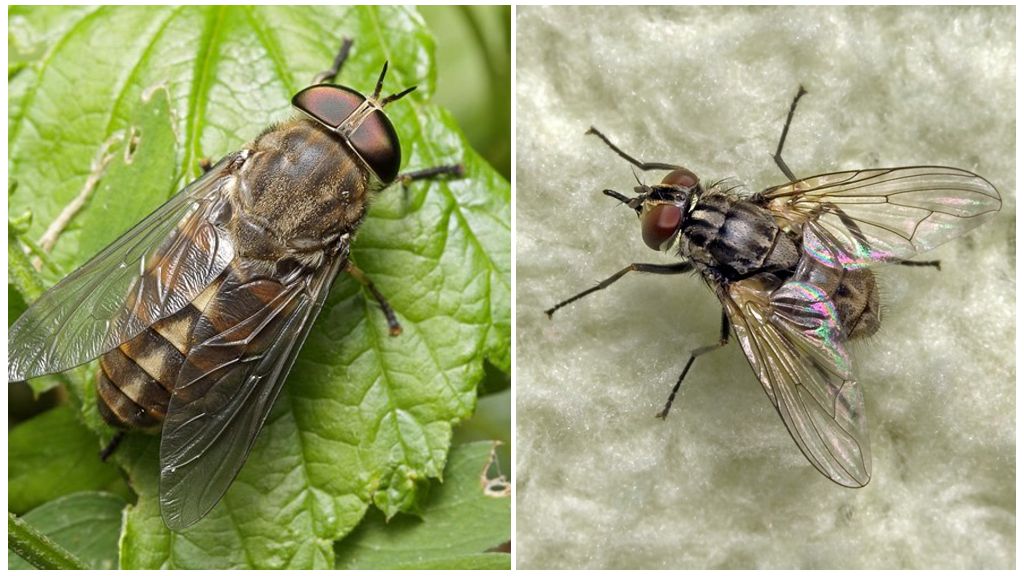
Lighters bite in the fall, at the end of summer. In the replenishment of blood supplies need males and females. The development cycle of a young lighter lasts about a month. Initially, females lay their eggs in rotting plant food, from which larvae appear - white worms. After 3 weeks of its existence, pupate, adult insects appear. Already on the tenth day, females can lay eggs.
What flies bite extremely actively - horseflies. Large representative of the genus.
On a note!
The most bloodthirsty females - can drink as much blood at a time as 70 mosquitoes can do at the same time.
A biting fly lives near ponds, determines the victim by its natural smell - carbon dioxide when exhaling, sweat. Big fly reaches 3 cm. Horseflies are the distributors of dangerous diseases - anthrax, polio. Even in the absence of infection, their bites are extremely painful, causing instant redness, swelling, severe itching.
The most dangerous species is tsetse flyliving in Central Africa. The insect suffers a deadly sleeping sickness, infects through a bite. A few minutes after the attack, the worsening state of health is observed, the temperature rises, the lymph nodes increase, and serious signs of intoxication appear. The last stage of the disease is not treated, which leads to death.
What insects do not need to be afraid:
- Gardeners often encounter an earthen fly - carrot, cabbage, onion. These are bright pests of garden crops, with which there is a merciless struggle, but they do not bite a person.
- Green, carrion or color fly has an extremely beautiful body color. Overflows of green, yellow, emerald. May be annoying, but not able to bite.
- Insect, wasp-like and a fly - ghost. The body is yellow with black stripes, long transparent wings. An absolutely harmless creature, despite the resemblance to a wasp.
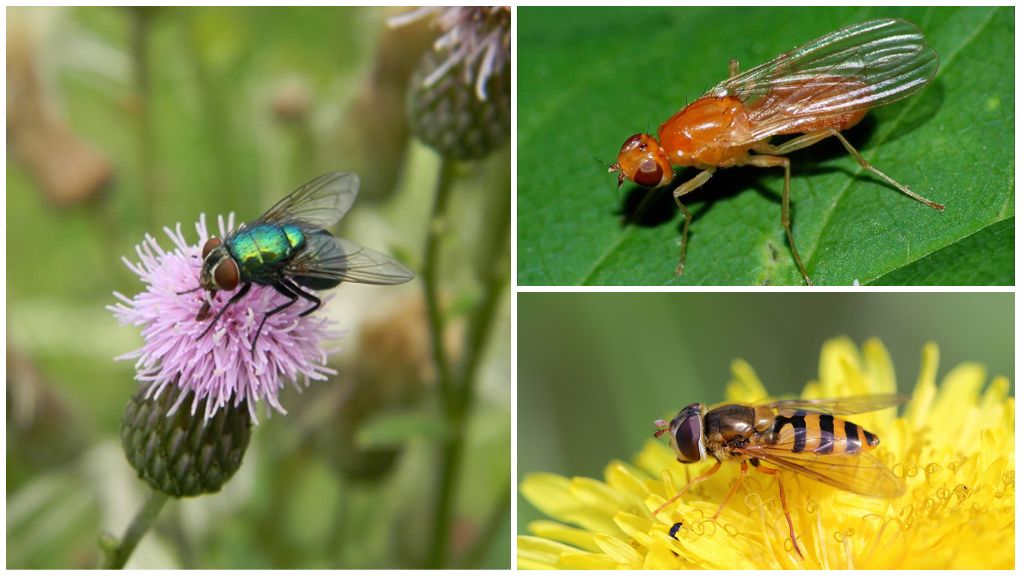
On a note!
For a person in the house, it is the lighter, which at the end of August by all means makes its way into the dwelling, crowds out ordinary house flies.
Signs of Bites
The insect is active during daylight hours. Bites over exposed areas of the body. It can bite legs, arms, back, stomach, neck, shoulders. The bite of a fly in children is especially pronounced. The insect injects a special substance that prevents blood clotting, facilitates the nutrition process. The body instantly responds to pest saliva, damage to the integrity of the skin.
Symptoms of bites:
- sharp pain;
- redness;
- edema;
- a spot with clotted blood in the center;
- swelling;
- itching
A photo of a fly bite is located below. In children and people with sensitive skin, allergies are much stronger. A large red spot appears, the limb swells, the itching does not stop.
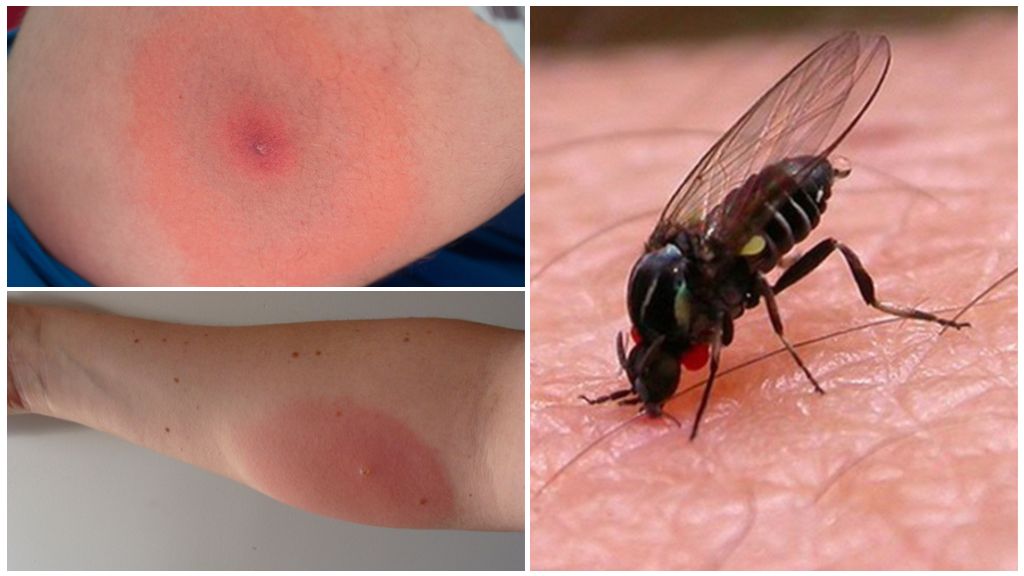
In most cases, the symptoms disappear on their own without special treatment in a few days. If a bite itches, they treat a sore spot with ammonia, medical, any alcohol tincture - calendula, valerian, motherwort, ginseng. Wash the wound with soap and water, apply a paste of baking soda to the site of the bite.
Important!
If the leg is very swollen after a fly bite or other serious allergy symptoms appear, take antihistamines, use external anti-allergic drugs.
To prevent pests from entering the house, mosquito nets are placed on windows and doors. Hang in the room sticky tape. Aerosols are used for bullying - Dichlorvos, Karbofos, Raptor, Raid, Clean house.
